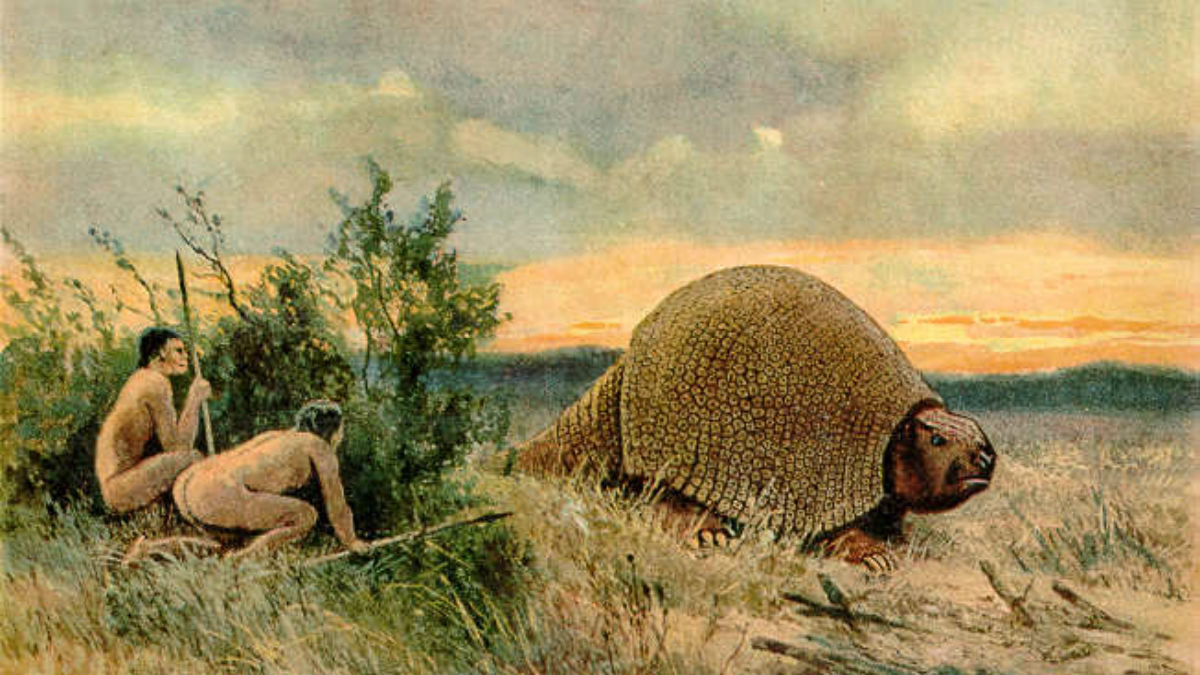Two-tonne armadillos the size of cars once roamed South America
Fossil analysis shows glyptodonts grew to be as big as Volkswagen Beetles, say scientists

Huge armadillos the size of cars once roamed the Earth, say scientists.
Glyptodonts, shelled mammals which first evolved about 35 million years ago, were long considered cousins of present-day armadillos. However, fresh analysis of a 14,000-year-old fossil has concluded that the ancient herbivores were the same creature.
Not only that, they grew as large as Volkswagen Beetle cars - the largest weighed around two tonnes, according to researchers. Today's armadillos are lightweights in comparison, ranging in weight from 187lbs to 13lbs.
The Week
Escape your echo chamber. Get the facts behind the news, plus analysis from multiple perspectives.

Sign up for The Week's Free Newsletters
From our morning news briefing to a weekly Good News Newsletter, get the best of The Week delivered directly to your inbox.
From our morning news briefing to a weekly Good News Newsletter, get the best of The Week delivered directly to your inbox.
Their methods of defence differed from the modern animal, too. While today's armadillos roll into a ball to protect itself, glyptodonts are believed to have depended on their shells and clubbed tails, as well as their vast size, for protection.
The tail would be "swung at any sexual rivals and potential predators who got too near", says The Independent.
"Glyptodonts should probably be considered a sub-family of gigantic armadillos," said Frederic Delsuc, of the National Centre for Scientific Research in France. "We speculate that the peculiar structure of their unarticulated carapace might have evolved as a response to the functional constraint imposed by the size increase they experienced over time."
They roamed the open grasslands of what is now South America for millions of years before they went mysteriously extinct in the last Ice Age.
A free daily email with the biggest news stories of the day – and the best features from TheWeek.com
-
 Tea with Judi Dench: ‘touching’ show is must-watch Christmas TV
Tea with Judi Dench: ‘touching’ show is must-watch Christmas TVThe Week Recommends The national treasure sits down with Kenneth Branagh at her country home for a heartwarming ‘natter’
-
 Codeword: December 24, 2025
Codeword: December 24, 2025The daily codeword puzzle from The Week
-
 Sudoku hard: December 24, 2025
Sudoku hard: December 24, 2025The daily hard sudoku puzzle from The Week
-
 Home Office worker accused of spiking mistress’s drink with abortion drug
Home Office worker accused of spiking mistress’s drink with abortion drugSpeed Read Darren Burke had failed to convince his girlfriend to terminate pregnancy
-
 In hock to Moscow: exploring Germany’s woeful energy policy
In hock to Moscow: exploring Germany’s woeful energy policySpeed Read Don’t expect Berlin to wean itself off Russian gas any time soon
-
 Were Covid restrictions dropped too soon?
Were Covid restrictions dropped too soon?Speed Read ‘Living with Covid’ is already proving problematic – just look at the travel chaos this week
-
 Inclusive Britain: a new strategy for tackling racism in the UK
Inclusive Britain: a new strategy for tackling racism in the UKSpeed Read Government has revealed action plan setting out 74 steps that ministers will take
-
 Sandy Hook families vs. Remington: a small victory over the gunmakers
Sandy Hook families vs. Remington: a small victory over the gunmakersSpeed Read Last week the families settled a lawsuit for $73m against the manufacturer
-
 Farmers vs. walkers: the battle over ‘Britain’s green and pleasant land’
Farmers vs. walkers: the battle over ‘Britain’s green and pleasant land’Speed Read Updated Countryside Code tells farmers: ‘be nice, say hello, share the space’
-
 Motherhood: why are we putting it off?
Motherhood: why are we putting it off?Speed Read Stats show around 50% of women in England and Wales now don’t have children by 30
-
 Anti-Semitism in America: a case of double standards?
Anti-Semitism in America: a case of double standards?Speed Read Officials were strikingly reluctant to link Texas synagogue attack to anti-Semitism